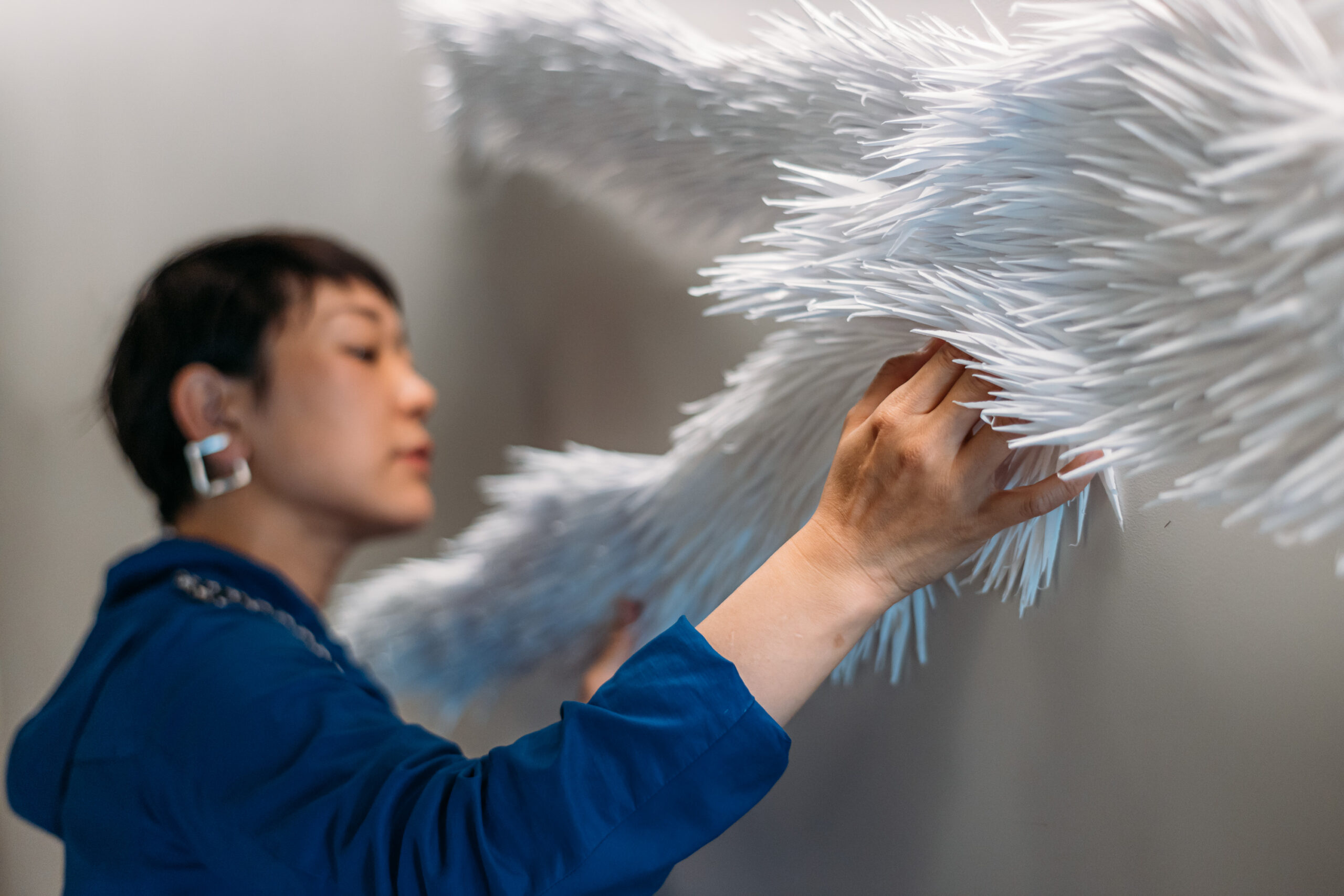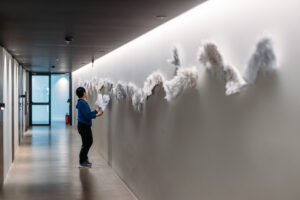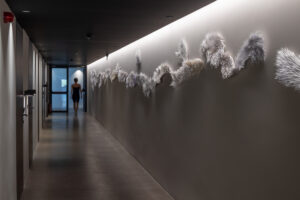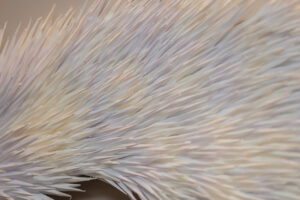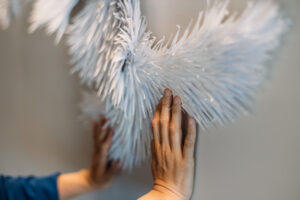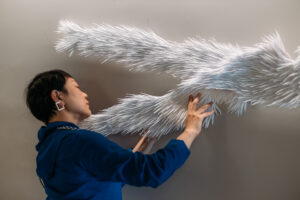Ami Yamasaki’s installation, Whispers travel and whisper to you again, made entirely of paper, is a sculptural symphony of whispers that weaves together experiences and sounds from Japan and Crete.
Yamasaki’s sculptural installations, such as Whispers travel and whisper to you again, are part of a long ongoing research process of the last fifteen years. In her work, she explores the threads that connect people to their environment and, by extension, to the universe. She familiarizes herself with a new space by listening intently and using a personal vocal technique – similar to the echolocation technique used by various animals, such as dolphins, to locate objects using reflected sound. Therefore, with the use of ‘acoustic shadows’, the artist captures the unique sound identity of each space, which she then ‘translates’ into a sculptural installation. Each section of the installation consists of several ‘wings’, made from hundreds of thousands of thin strips of paper glued one by one – the result of a physically demanding process that requires days to complete.
Her work Whispers travel and whisper to you again extends along a fifty-meter-long corridor, creating a path of sound for the viewers to explore at their own pace. The absorption, reflection and reverberation of sounds invites us to use our hearing on a journey of exploration. Observing the details of the wings closely, one is immediately captured by the whispers of the stories each wing tells. These flowing forms that translate the acoustics of the space, but also the soundscape of the surrounding area, namely Agios Nikolaos, prompt us to imagine the places where these sounds were born and the routes they have already travelled.
These almost imperceptible sounds – improvised songs – connect today’s viewers with their natural surroundings, highlighting, in this way, another dimension of care, the care for the lived place, the place of residence, which is always included in its historical context. Nostalgia for a place is often nostalgia for its colours, smells, and sounds. The intended relationship and care for the environment is always based on the love for those dim qualities that constitute it an object of care. Care and the environment, care and the community, both in the sense of shared spaces and collective thought and action, appear to be highly intertwined in this redefinition of this notion.
Photography and Video Loukianos Arnaoutakis

